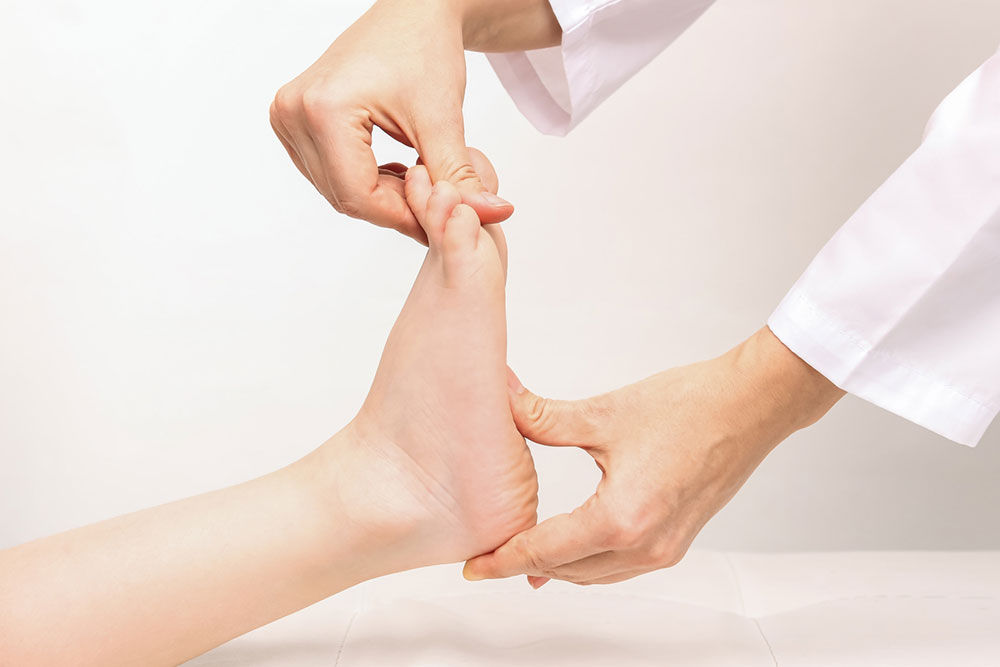Osteomyelitis – Signs and Management Options
Osteomyelitis is an infection of the bone. It usually happens when an infection travels through the bloodstream and reaches the bone or travels through the nearby tissue and reaches the bone. There are also cases when the infection starts at the bone itself; this could happen if the bone has been exposed due to injury and has been infected with germs.

Signs and symptoms
Bone pain
This is an early symptom of osteomyelitis. There is persistent and often severe pain experienced in the infected area of the bone. The pain may worsen if the affected area is pressed or there is too much movement.
Swelling
There could be some swelling, redness, or warmth around the affected bone area, and this could be due to the inflammation caused by the infecting germs.
Fever
A fever is a common sign of infection that should not be ignored. A natural reaction to fighting off the infection involves raising the body temperature so much that the germs are killed. Fever is often also accompanied by chills throughout the body.
Fatigue
As the body prepares to fight off the infection, there is fatigue and exhaustion that follows this process. So, one can experience some weakness and lethargy as well.
Pus drainage
In some cases, if the infection is very severe and remains unattended, it can form an abscess. So, there could be some drainage of pus from the affected area.
Difficulty moving the affected limb
This especially happens when the infection affects a joint. It restricts the movement of an individual because of the inflammation and pain experienced. Also, there could be damage to the surrounding tissue, and the destruction of the bone, which results in decreased mobility.
Osteomyelitis treatment options
The most common way to treat osteomyelitis is to perform a surgery on the affected area to help relieve the symptoms. Here is the typical treatment process:
Draining the infected area
In this procedure, the surgeon opens up the wound around the affected area and this allows for them to easily remove or drain out the pus which has been collected there due to the infection.
Removing infected bone and tissue
In this process, which is also called debridement, the surgeon carefully examines the infected bone and the nearby tissue. The surgeon then moves on to removing the diseased bone as close to the healthy bone as possible, leaving only a small margin. If there is any sign of infection in the surrounding tissue as well, that part is also carefully removed by the surgeon.
Restoring blood flow to the bone
After the debridement process, there is a gap in the infected area from where the tissue or the bone has been removed. The surgeon will fill this space with a piece of healthy bone or tissue. This could also include skin or muscle that is taken from another healthy part of the body. In some cases, there are temporary fillers which are used to fill the gap as a temporary solution. Once the person is healthy enough, they can then proceed with a bone graft or tissue graft procedure. In this procedure the body repairs the damaged blood vessels and it helps in forming the new bone in the treated area.
Removing any foreign objects
There are cases when some screws or surgical plates were used in the surgery previously. So, the next step is to remove them once the healing is thorough.
Amputating the limb
In a very severe case when the infection is spreading to the rest of the body, the surgeon may suggest amputating the limb to stop the infection from affecting other parts or organs.
There are not many natural remedies for osteomyelitis. However, one can add foods such as garlic to their daily meals to boost their immune system and fight off infection. Moreover, a thorough diagnosis and consultation with the doctor will help in understanding how the treatment process will go and what the recovery will look like. The diagnosis is a significant part of osteomyelitis treatment, so take a look at potential tests and procedures.
Diagnosis
This involves some blood tests, imaging tests and a bone biopsy to understand what kind of germ is responsible for the infection.
Blood tests
The white blood cells in this test may seem elevated because they are fighting off an infection. The tests may also reveal the kind of germ responsible for this. The blood test alone cannot inform the doctor about the disease, however, it can give some clues on what other tests are required to confirm their speculation about the disease.
Imaging tests
The X-rays can help reveal any damage that is done to the bone. It is possible that in the initial few weeks of the infection, the X-rays may not show anything substantial. This may call for more detailed imaging tests. MRI is the next set of tests that give details on the bone and tissue with exceptional quality data.
There is also the option of a CT scan, but that is usually recommended to anyone who cannot go through an MRI procedure.
Bone biopsy
This is the procedure which gives a clear indication of the type of germ that affects the bone infection and accordingly the treatment procedure can be planned with the doctor.


